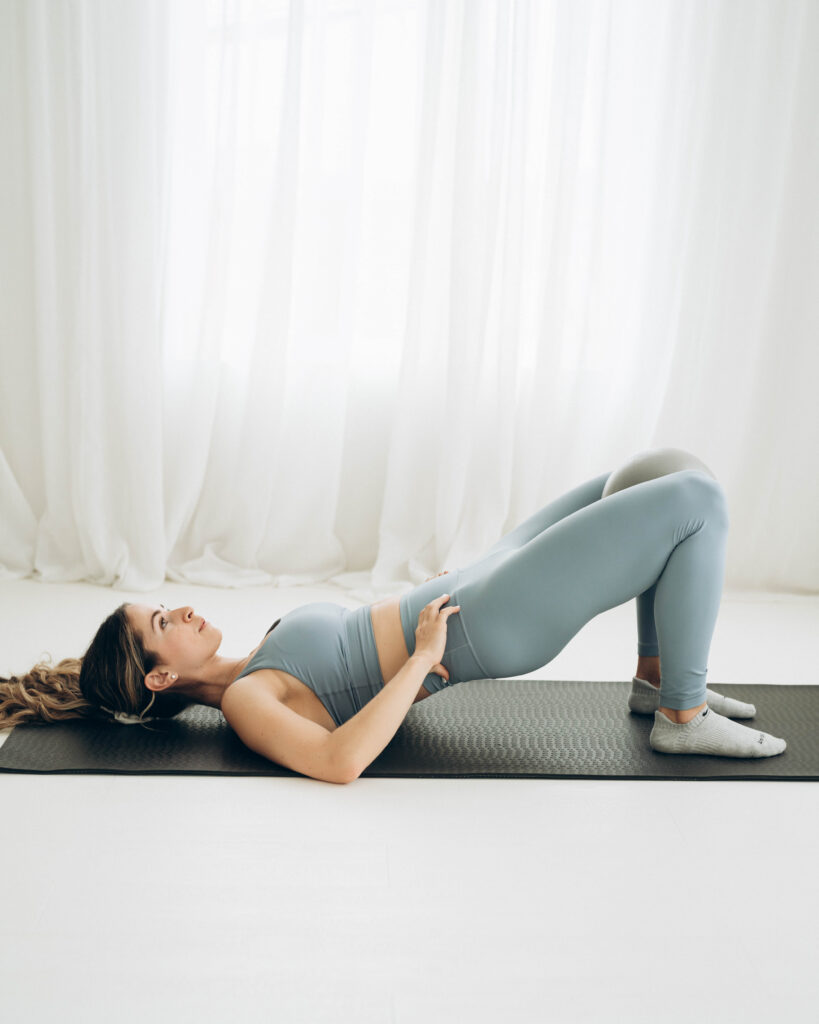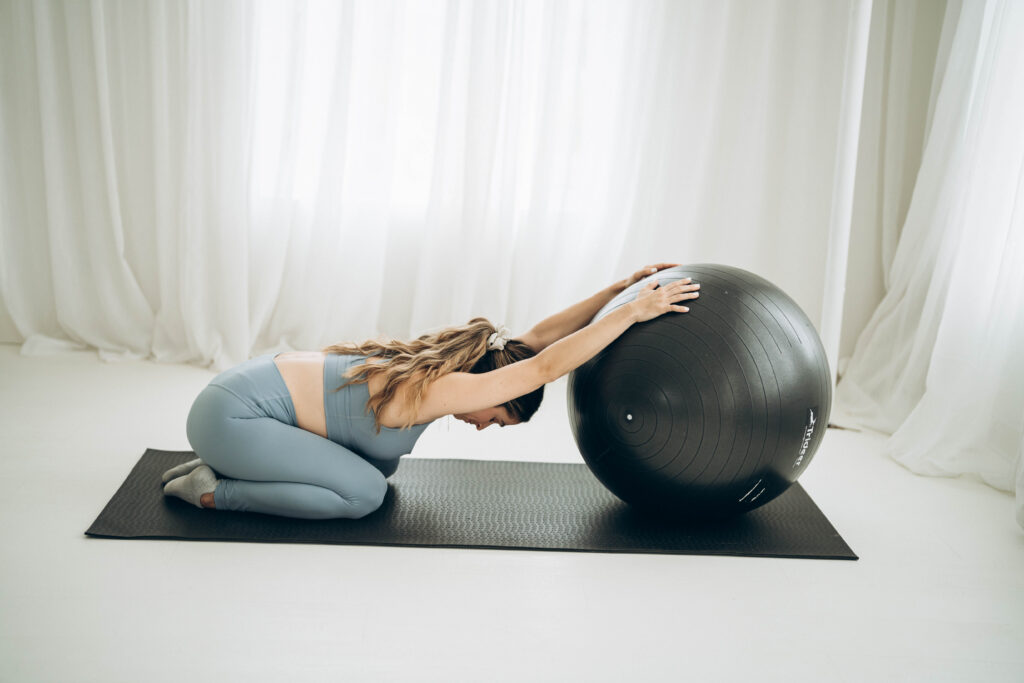How to Stop Peeing When You Cough (or Do Other Normal Activities)

Picture this: you’re streaming your favorite comedy for the hundredth time, and your favorite line still cracks you up after all these watches. But when you giggle, you feel something else, unexpected and unwelcome: a trickle of urinary leakage that shows up as you laugh.
For many women, incontinence shows up during normal, everyday activities: coughing, sneezing, laughing, vomiting, or running. But just because this problem is common doesn’t make it normal — and you’re not alone in wanting to find some relief.
Peeing while coughing (or any other typical activity) is frustrating, not to mention potentially embarrassing. You don’t have to live with this frustration for the rest of your life! Incontinence is not a price you must pay for pregnancy, childbirth, competing in high-intensity sports, or experiencing pelvic floor conditions. Help is available, and symptom relief is possible. But first, let’s talk about why leakage happens in the first place.
Why does incontinence happen?
Unfortunately, it’s not exactly possible to diagnose through the internet. There are several reasons incontinence shows up as an uninvited guest, and each of them stem from different causes. Incontinence typically takes two forms: stress incontinence and urge incontinence.
Urge incontinence is defined as a sudden, compelling urge to empty the bladder along with an ill-timed contraction of the bladder, while stress incontinence is defined as urinary leakage that occurs due to activity or pelvic floor pressure. The examples I provided at the beginning of this blog are stress incontinence related, so if you find yourself experiencing leaking when your pelvic floor muscles are active or “stressed” (coughing, jumping, laughing, etc.), this is likely the underlying cause. It’s possible for women to experience both stress and urge incontinence, too.
An in-person appointment with your provider or pelvic floor PT will give you individualized insight and treatment options, but today, I can give you some of the most common reasons this occurs. You might be able to narrow down this list to help you discuss specifics during your next appointment!
Poor management of intra-abdominal pressure
Your entire abdominal cavity functions a little bit like a soda can. Your pelvic floor is the bottom, your diaphragm is the top, and your abdominal and back muscles are the sides. Together, all of these muscles work to keep your abdomen pressurized correctly to keep your internal organs safe. When they’re functioning correctly, they evenly disperse your intra-abdominal pressure through your pelvic floor, core, and lower back.
If any one of these muscles or muscle groups doesn’t function properly, the entire system can become dysfunctional and cause a wide variety of symptoms, including urinary incontinence. And weakness isn’t always the culprit — sometimes, your pelvic floor is too tight or too pressurized, which can make it hard for it to appropriately contract. Your pelvic floor muscles need to contract in order to hold urine in your bladder until it’s time to use the restroom.
Weakness of your pelvic floor
Sometimes, your pelvic floor does experience weakness. This can happen for a number of reasons, from injury during pregnancy or physical activity to improper training of the pelvic floor muscles. When your pelvic floor is weak, it can’t withstand the added stress and pressure of a cough, laugh, or jump to hold your urine in your bladder, which results in leakage. Not sure if pelvic floor weakness is the culprit for you? Read this blog to learn more.
Poor coordination of your pelvic floor muscles
Even if your pelvic floor muscles aren’t too tight or too weak, they might need some additional help learning how to function properly together. When you cough or sneeze, your pelvic floor muscles need to contract quickly to compensate for the added pressure. Without the right timing or coordination, your muscles might not contract in time to prevent the flow of urine. The good news here: like any other muscle, your pelvic floor can be rehabbed and trained to stop this issue!
Weakness in surrounding musculature
Sometimes, the muscles surrounding your pelvic floor are the culprit for incontinence. For example, if your hip muscles are weak, your pelvic floor will try to make up the difference. As it does more work than it’s supposed to over time, it can become too tight or overactive and cause incontinence. When you have strong muscles all around, they can all accept the load from your cough, laugh, or workout. And when everyone works together, everything works better!
Why does it only happen when I am pregnant?
Your body is constantly evolving and changing, but never more so than during pregnancy and postpartum. As your baby grows, your uterus expands to make room for it, which causes increased pressure on your bladder. As your pregnancy progresses, you’ll also experience increased tension because your bladder has much less room to expand against your pelvic floor than it typically does!
Pregnancy also asks your pelvic floor muscles to do a lot of heavy lifting – literally. Your pelvic floor has to hold up much more weight during pregnancy as your baby and uterus keep growing. Not only is your baby physically expanding, he or she is getting heavier, and that can be tough for your pelvic floor to handle for months on end. The additional weight might be too much for your pelvic floor, making it hard for those muscles to do their job correctly.
What is their job, exactly, you might be asking? In addition to keeping your internal organs (and your baby during pregnancy!) safe and sound, they also wrap around your urethra to prevent flow of urine unless you’re actually using the bathroom. But when they’re devoting all their strength to keeping that baby held in, they can’t always control the urethra too.
What can I do about urinary leakage?
See a pelvic floor physical therapist
You’ll hear me mention it in nearly every blog: working with a local pelvic floor physical therapist is the gold standard for treating urinary incontinence and a whole host of other pelvic floor issues. They will work with you to address your individual reason for leakage. Whether it’s stemming from pelvic floor weakness, pelvic floor tension, lack of coordination, or poor intra-abdominal pressure, they should be able to put together a treatment plan to help your individual situation.
Incorporate at-home exercises
If you’re not able to get to a PT office, or you want to supplement your sessions with at-home movements, I recommend these three things for many of my in-person patients.
Practice “the knack”
This is a quick contraction and lift of your pelvic floor up and in right before and during a cough. Yes, I literally send people home with coughing homework – practice really helps improve the timing of contracting your pelvic floor.

Improve your hip strength
Several research studies have pointed to decreased hip strength as a correlating factor in women with both stress and urge incontinence. Specifically, decreased hip external rotation strength and decreased hip abduction strength is associated with incontinence in women, so strengthening these two muscle groups could help your symptoms!
Try adding an isometric clamshell exercise to your weekly routine to target your hip external rotators.

Expert tip: You only need to lift your knee slightly higher than your hip, and make sure to not roll backwards.
You could also add a hip abduction wall slide into your weekly routine to target your hip abductors (outer thighs)

Expert tip: Focus on keeping your foot slightly behind you as you slide it up the wall. Gently press your heel into the wall to improve glute activation – remember you don’t need to lift it very high, just slightly higher than the height of your hip.

Relax your pelvic floor
As mentioned above, an overactive or tight pelvic floor might have a hard time contracting when you need it to… because it’s exhausted from being worked or squeezed all day! To help your pelvic floor relax, practice child’s pose, inhaling into your rib cage to expand it 360 degrees.

Expert tip: Focus on feeling your pelvic floor lower like a trampoline as you inhale, then exhale. As you simply blow out the air, focus on relaxing your entire body. This is simple, but so effective!

Begin an online program
Want to train consistently and progressively? Self-paced online programming is a perfect fit. I have created two courses specifically for mamas and mamas-to-be that help you reestablish your connection with your pelvic floor, learning how to relax and contract it in a timely manner.
Movement Through Pregnancy is a 37-week program for women who want to stay active through each trimester and prepare well for childbirth. Movement Through Early Postpartum is for mamas who have already given birth, either vaginally or from a cesarean. You can begin this course during early postpartum, but it’s never too late to work through these modules!
Whether you’re in your first, second, third, or “fourth” trimester, both of these courses work to improve your full body strength instead of focusing exclusively on your pelvic floor. Core work is highlighted, of course, but because the whole body is connected, your pelvic floor is usually not solely responsible for incontinence. When your whole body works together, your whole body benefits!
I hope this gives you a helpful place to start as you pursue incontinence symptom relief. Remember, you’re not alone, and you CAN find ways to improve this condition! I’m rooting for you.